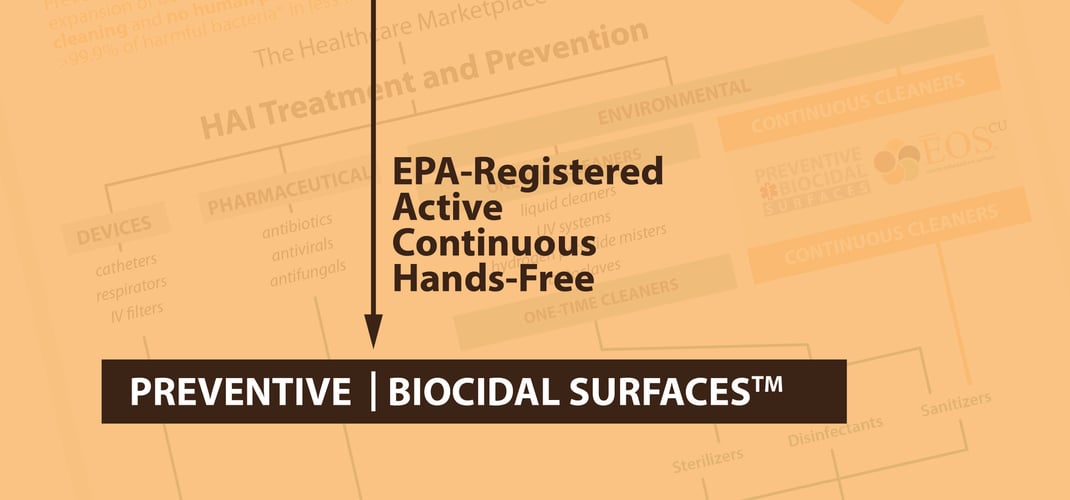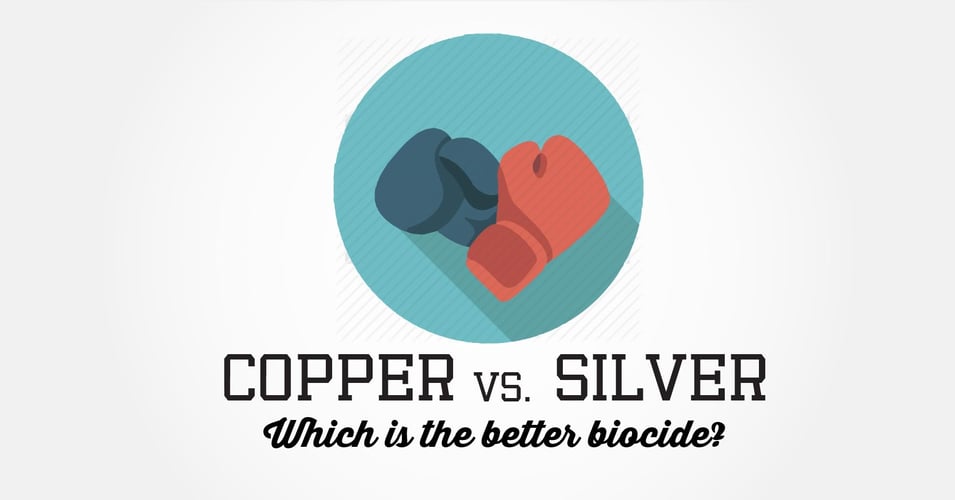Silver vs Copper: Which is the better biocide? (Part 4)

Resistance - antibiotic or otherwise - is a game of survival of the fittest. Bacteria strains can be killed by an antibiotic that targets a specific cell mechanism, until a particular bacteria mutates into a strain that is able to survive. Such is the case with MRSA, a strain of Staphylococcus aureus that cannot be killed by methicillin-class antibiotics. But how about resistance to silver and copper as biocides? It turns out that every cell's need for copper makes this metal far, far less likely to cause resistance.
Bacterial Resistance and Silver
There are a many known strains of bacteria that are silver-resistant. Silver is not required for any biological purpose, so cells can become resistant to silver far more easily than they could become resistant to an essential metal. Bacteria can acquire an adaptation which enables cells to recognize a silver ion at the outer membrane level and either sequester it in the cytoplasmic layer (kind of a no man's land between outer and inner membranes) or ferry it out with specialized chaperones. One study of a hospital in Chicago revealed that 10% of the bacteria tested silver-resistant, and silver nanoparticles have been shown to leach into the environment, presenting a new area of potential silver resistance.
Bacterial Resistance and Copper
After millennia of use, there are no known bacterial strains which are capable of resisting copper's biocidal activities. One of the reasons copper has the advantage is its role as a trace micronutrient. The spot it fills in 18 key enzymes cannot be filled by any other micronutrient. As a result, bacteria cells are programmed on the genetic level to accept copper through their membranes, even to the point of cell death. Copper's role as an oxidizer is as important to bacterial cells as it is to us; cells need to allow copper to come through their membrane. They cannot sequester it or ferry it away as they can do to silver. The best they can do is control how much copper gets into the cell, but even this degree of tolerance cannot slow down the biocidal effects of copper and its two active ions, Cu+ and Cu++.
Who wins as the better biocide and its ability to avoid bacterial resistance? Copper.
Bacteria cells require copper to live, and therefore cannot completely abandon the mechanisms designed to bring this micronutrient in through the cell wall. In a kind of Achilles Heel scenario, it is the bacteria cell's very need for copper that makes it particularly vulnerable to this metal.
When choosing a biocidal surface material, it is wise to take into consideration not only current biocidal activity, but also future biocidal activity. Copper, and the only copper-infused solid surface, EOSCU, present bacteria with a current and future foe: The micronutrient they can't live without, but thankfully for us, can't live with in excess, either.
Editor's Note: This post was originally published in October 2015 and has been updated for freshness, accuracy and comprehensiveness.
![EOScu Logo - Dark - Outlined [07182023]-01](https://blog.eoscu.com/hubfs/Eoscu_June2024/Images/EOScu%20Logo%20-%20Dark%20-%20Outlined%20%5B07182023%5D-01.svg)

![[infographic] Copper vs. Silver: Which is the better biocide? Download and share!](https://no-cache.hubspot.com/cta/default/216314/interactive-178295793017.png)



